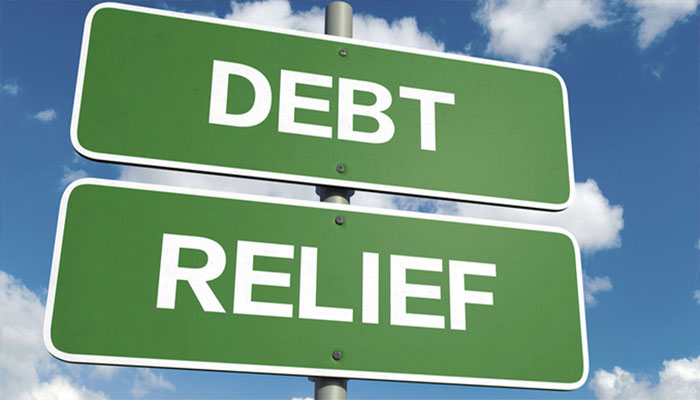Public debt surges 5.61pc in July-April FY2021
The central government’s debt stood at Rs37.078 trillion at the end of April 2021
KARACHI: Pakistan’s public debt increased by Rs1.971 trillion or 5.61 percent in 10 months of the current fiscal year as the government borrowed heavily to fund the budget deficit and the Covid-related expenditure needs. Higher interest payments also contributed to the rise in the stock of the public debt.
The central government’s debt stood at Rs37.078 trillion at the end of April 2021, compared with Rs35.107 trillion in the period ended June 2020, according to the central bank’s data released Monday.
The debt rose eight percent year-on-year in April. It amounted to Rs34.323 trillion in the period that ended April 30 2020. Major increase in the public debt emanated from government domestic borrowing, which surged 8.86 percent to Rs25.345 trillion. However, the external debt inched down 0.76 percent to Rs11.733 trillion at the end of April 2021.
Within domestic debt, the long-term debt rose 8.29 percent to Rs19.172 trillion, while the short-term debt increased 10.25 percent to Rs6.150 trillion. The main culprit for the public debt is budget deficit. However, it fell 0.6 percentage points to 3.5 percent of gross domestic product in the first three quarters of FY2021.
Higher markup payments, nonetheless, offset the gains in the primary balance. This resulted in an increase in the stock of public debt. The bulk of interest payments were financed through the issuance of new debt.
The State Bank of Pakistan (SBP) , in its second quarterly report, said that the pace of the debt build-up remained slower in the first half of FY2021, compared with the same period last year, primarily due to lower volume of incremental government deposits with the banking system and revaluation gains on external debt in the rupee terms.
“From the institutional perspective, the government adhered to its commitment of zero fresh borrowing from the central bank and relied on scheduled banks for domestic financing needs,” the SBP’s report said.
As for the external debt and liabilities, nearly 83 percent of the increase (in dollar terms) represented Pakistan’s increased engagement with multilateral and bilateral sources.
The government also borrowed through commercial sources in July-December FY2021. These borrowings were long-term in nature, but concentrated primarily in first and the second quarters; the outstanding stock of commercial borrowings had declined, as the government had retired its short-term obligations, it added.
The SBP said that the current economic recovery has been supported by proactive and well-calibrated policies of the government and SBP since the Covid-shock. Given high public debt, targeted fiscal support was mainly delivered through a reallocation of spending that focused on the most vulnerable, including through the Ehsaas programme.
This was enabled by the buffers that had been built up in the economic stabilisation phase prior to the Covid pandemic. Pakistan witnessed one of the smallest increases in public debt across the world after the Covid-shock, supporting market sentiment and the investment outlook, SBP added.
The government might target 4.8 percent GDP and 5.5-6 percent budget deficit for FY2022. Analysts said the expected higher growth rate was likely to lead to increased government borrowing needs and hence a rise in the budget deficit in the upcoming fiscal year. Increasing tax revenues as well as managing debt commitments would be a major challenge for the government.
-
 Trump Trolls European Leaders With AI Map Showing Greenland As U.S. Territory
Trump Trolls European Leaders With AI Map Showing Greenland As U.S. Territory -
 AI Vs Reality: How Deepfakes Are Warping Story Of Maduro’s US Capture
AI Vs Reality: How Deepfakes Are Warping Story Of Maduro’s US Capture -
 Why Ryan Coogler Got Worried After Pitching 'Sinners' To Michael B Jordan
Why Ryan Coogler Got Worried After Pitching 'Sinners' To Michael B Jordan -
 Princess Diana's Brother Shares Emotional Post After Prince Harry Returns To UK Without Meghan, Archie, Lilibet
Princess Diana's Brother Shares Emotional Post After Prince Harry Returns To UK Without Meghan, Archie, Lilibet -
 'Disgraced' Andrew Gets Away With Major Double Standard Over Royal Lodge
'Disgraced' Andrew Gets Away With Major Double Standard Over Royal Lodge -
 Carson Beck Girlfriend Rumours Explained Amid CFP Championship Run
Carson Beck Girlfriend Rumours Explained Amid CFP Championship Run -
 Sean Penn's 'very Human Reality' Leaves Madonna Horrified
Sean Penn's 'very Human Reality' Leaves Madonna Horrified -
 Fernando Mendoza Girlfriend: Is The Indiana QB Dating Anyone?
Fernando Mendoza Girlfriend: Is The Indiana QB Dating Anyone? -
 King Charles' Decision 'not Good Look' For Prince Harry Amid UK Court Case
King Charles' Decision 'not Good Look' For Prince Harry Amid UK Court Case -
 South Korea Announces First Set Of New Space Technologies
South Korea Announces First Set Of New Space Technologies -
 Jimmy Butler: Warriors Star Awaits MRI Results After Knee Injury
Jimmy Butler: Warriors Star Awaits MRI Results After Knee Injury -
 Blake Lively Gushes Over Ryan Reynolds Amid Feud With BFF Taylor Swift
Blake Lively Gushes Over Ryan Reynolds Amid Feud With BFF Taylor Swift -
 Prince William 'furious' At Meghan Markle, Harry
Prince William 'furious' At Meghan Markle, Harry -
 Church Under Investigation After Anti-ICE Protest Interrupts Worship
Church Under Investigation After Anti-ICE Protest Interrupts Worship -
 UK Govt Tightens School Rules On Phones And Social Media
UK Govt Tightens School Rules On Phones And Social Media -
 Fernando Mendoza’s Mom Steals Hearts After Indiana Wins National Championship
Fernando Mendoza’s Mom Steals Hearts After Indiana Wins National Championship




